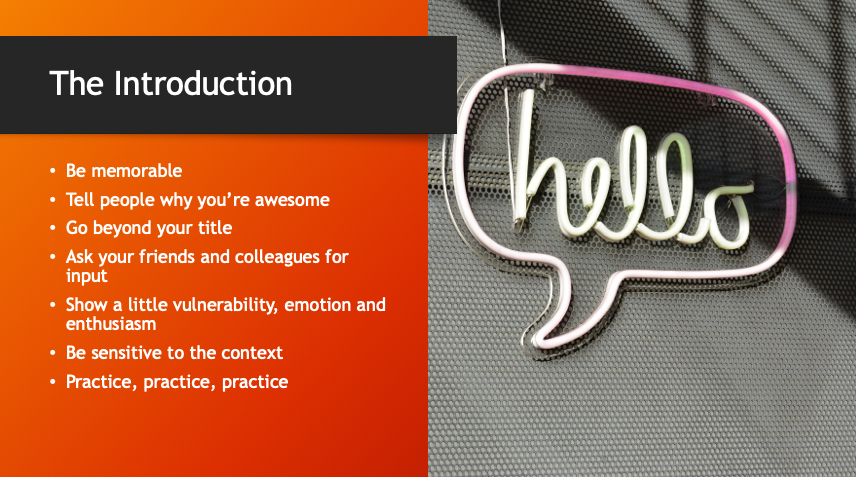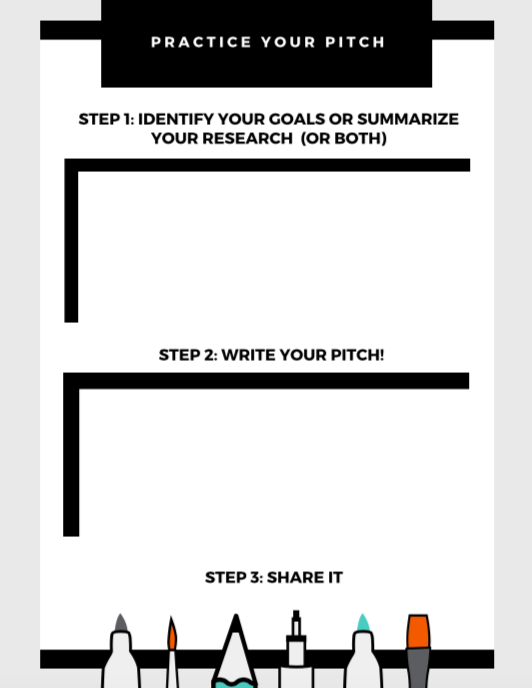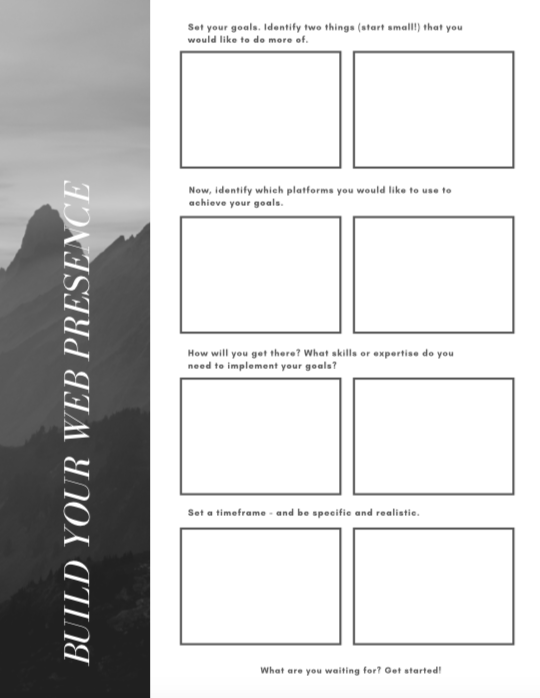Taking an Entrepreneurial Approach to your Academic and Professional Career
Photo by Garrett Sampson on Unsplash
Just over two weeks ago, on January 30th, I led a workshop at a conference that I helped organize at the University of Ottawa - InterCOMM. The conference was held from 12pm to 5pm on campus and my workshop ended up being the last part of a very full day!
InterCOMM was actually started 10 years by the then-graduate student association at the Department of Communication, and I had been fortunate enough to present at its first iteration while doing my Masters. There hasn’t been a conference in a year or two, but with departmental support and encouragement, the student association once again led the charge organizing this year’s Conference. This is a great opportunity to thank my colleagues on the CGSAÉDC for all of their time and hard work planning, implementing and participating in this conference with me - thank you Nathalie Waldschmidt, Josée Basque and Maxime Le!
As you can see from the program, the purpose of InterCOMM is to bring together graduate students in Communication (MA, M.Comm, and Ph.D) in all departmental specializations including health, media, organizational, and government communications to interact, share thoughts, and get an idea of the research being conducted in these diverse fields of interest. Sessions took place in both official languages this year, with panels running on a rolling basis throughout the afternoon.
InterCOMM2020 programme (created by Josée Basque)
The workshop that I developed, “Taking an entrepreneurial approach to your academic and professional career” aimed to get participants thinking about how to differentiate themselves in today’s workforce - whether it be as graduate students, academics, or future communications professionals. With countless online and offline options for networking, a pressing concern in the workforce about underemployment and a lack of job opportunities for Ph.D students, it’s not surprising that this topic has also been addressed recently by the University of Ottawa’s Graduate Students’ Association (GSAED) - see below - and was highlighted at the APTPUO’s (in)visible conference last Fall on a Panel entitled “PhD Students Confront a Challenging Future”.
GSAÉD also held a workshop in February 2020 about marketing yourself and your brand
The workshop emphasized crafting the perfect introduction, using business cards, networking and practicing your pitch, building your web presence, and strengthening your (academic) CV.
It’s not uncommon when introducing yourself to start with your name and title - “Hi, my name is Jennifer and I’m a Ph.D Student and Part-time Professor at the University of Ottawa” - but unless your job or title is remarkable, your introduction probably won’t be. Limiting yourself in this way might mean missing an opportunity to let someone know who you really are. Your introduction should tell someone what you love about your profession and what you hope to accomplish through it.
“Hi there, I’m Jennifer and I’m really passionate about popular culture and what we can learn from the television shows, movies, and music that we watch and listen to. This is what the classes that I teach at the University of Ottawa are about, and it’s also what my research is about.”
A good introduction should peak someone’s interest - it should lead them to want to know more about who you are and what you do! It should also be context-specific, after all, how you introduce yourself to a potential employer is different than how you introduce yourself to a new colleague, a group of students, or a new friend. For example, how I introduce myself when I teach spin class and have some new faces in the crowd (see below) is different from how I would introduce myself to my students on the first day of class.
“Morning! My name is Jenn, if we’ve never met before thank you for getting out of bed to join me early this morning on a bike. Outside of this room, I run, weightlift, do yoga, and am working on my PhD at UOttawa. I also have a dog named Robert who you’ll hear about all the time. What else can I tell you? I’m 33, single… I like long walks on the beach… I’m kidding, I’m kidding. Well, actually, I am single. And I’m 33. If you know anybody (*wink*)…”
The point is when we meet someone new, we have one opportunity to make a first impression and introductions are a huge part of that. A good starting point for building your introduction is to ask your friends, family members, and co-workers about you and what you do well. People from different parts of your life will generally find common themes or language. Then, I’d recommend writing it down! I created these two worksheets to help get this process started:
Business cards are a key part of any (successful!) introduction. It doesn’t have to be flashy or fancy – it can be, if that your style – but it’s great to walk away from a conversation with someone’s contact information. Unless it’s a date, after a first meeting you likely won’t want to save someone’s information in your phone.
This is the main reason for business cards - giving someone your contact details! It’s not the only reason though. A business card can also be an effective tool for conveying your brand message as well as to impress the person you’re talking with and stand out.
There are some great - not to mention cheap and easy - places to design and print your business cards. Check out some of Canva’s free templates or your local office supplies’ store.
Even in a world of Academia.edu, Government of Canada job postings on Twitter and Skype Interviews, good ol’ fashioned networking - when done right! - still holds tremendous value. Talking about your research, your goals and aspirations puts you (and them!) out into the world. It creates the possibility that something will spark your name in someone’s mind when they hear about a job, a conference or some other resource or opportunity.
But how do you do it? The key, like with the perfect introduction, is to focus on building relationship by sharing your story and your passions honestly and genuinely rather than focusing on the outcome (such as getting the person you’re talking with to offer you a job). In order to get there, you first have to know what it is that you want to share - what parts of your story you want to tell someone. Is it an exciting research project that you’re working on? Or a social issue that you’re passionate about? Then, once you’ve figured it out, how do you frame it? How do you tell people about it?
Whatever it is, this worksheet will get you started:
In addition to sharing your story through networking, conveying your story online through your web presence is essential in the digital economy - especially in the field of communications where familiarity with digital tools is expected by future employers.
One of the challenges with building your web presence is choosing which tools to use and how to get started. Some key questions to consider when making these decisions are what kind of web presence do you currently have, what kind of web presence would like to have, and what will it take to get there.
Finally, we touched upon the importance of our Curriculum Vitae as a tool for communicating who we are, what we’ve done and what we want to do.
Every industry has its own expectations, its own ‘culture’, when it comes to resumes, so it’s important to do some research about what sections and information should be included.










